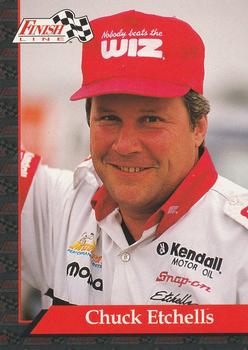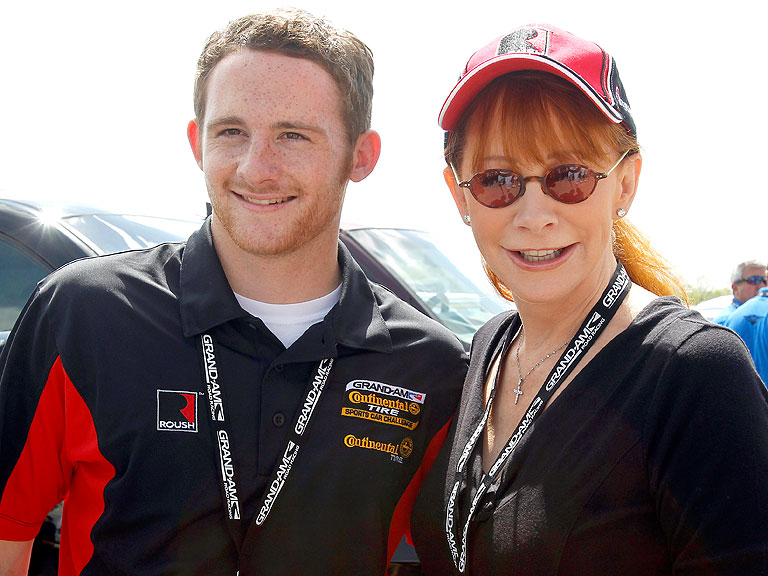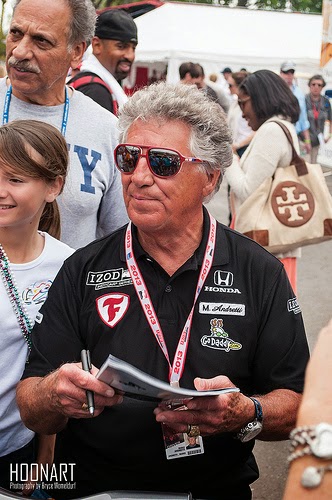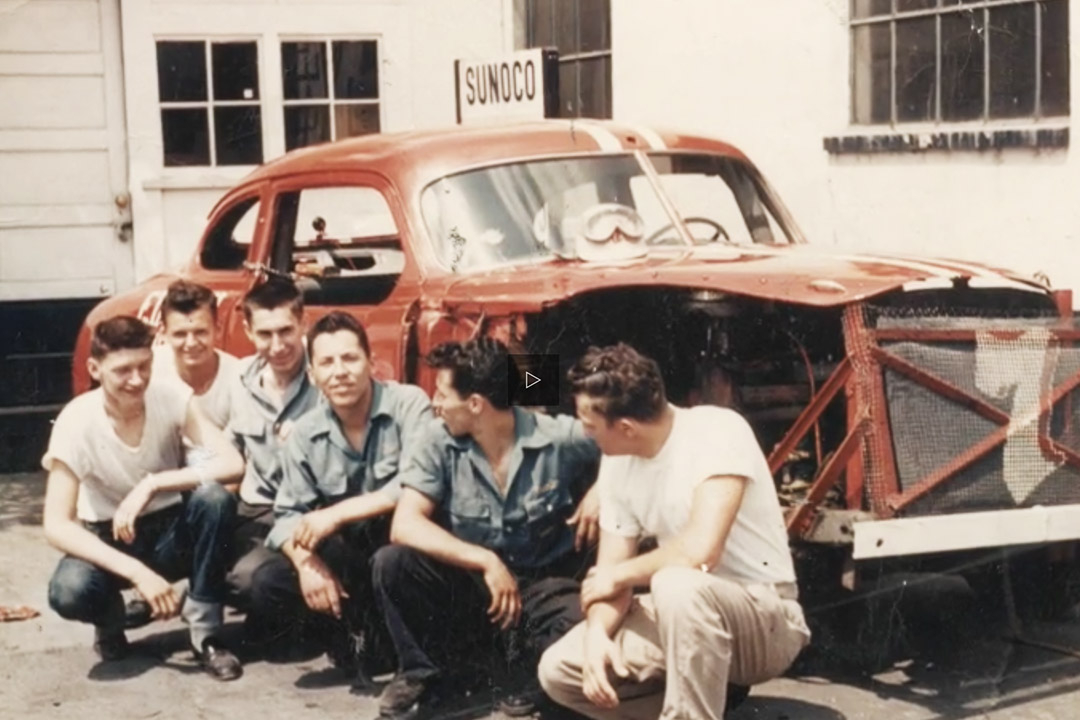February 20, 1959 – May 17, 1996
Scott Brayton
Born in Coldwater, Michigan, USA.
He competed in 14 Indianapolis 500s, beginning with the 1981 event. Brayton was killed in practice after qualifying for the pole position for the 1996 race.
During the mid-1980s, Brayton helped introduce the Buick stock-block V-6 engine to Indianapolis. His father's firm, Brayton Engineering, was a major developer of the race engine. In 1985, he qualified 2nd and set the one-lap Indianapolis Motor Speedway track record in the process. He dropped out early and finished 30th when the engine expired. He would not finish the race again until 1989, when he scored his best finish at the Speedway, 6th place but seven laps down. He would equal this finishing position in 1993, driving a Lola-Cosworth for Dick Simon Racing.
When Buick pulled out of IndyCar racing in 1993, John Menard continued developing the engine, now badged as the Menard V-6. Brayton, now without a regular ride in the CART IndyCar series, joined the Indy-only Menards team in 1994. Their belief in the powerplant paid off when Brayton won his first Indy 500 pole position in 1995, at an average speed of 231.604 mph. Turbocharger boost and pop-off valve problems relegated him to a 17th place finish.
In 1996, Indianapolis Motor Speedway owner Tony George established the Indy Racing League, and Team Menard signed up to compete in their first full season of IndyCar racing. Because the majority of the established teams and drivers of open-wheel racing competed in the rival CART series, Brayton, and rookie teammate Tony Stewart, were considered legitimate contenders for the IRL title. After a bad start to the season, Brayton asserted his competitiveness by winning his second Indy pole after a dramatic qualifying session in which he withdrew an already-qualified car to get a second chance at taking the top spot.
Brayton was making a practice run on May 17 in his backup car when it blew a tire going into turn two, spun and hit the outside retaining wall at more than 230 mph. Brayton's car scrubbed off virtually no speed as it spun, and as the car impacted the wall on its left side, the force was such that Brayton's head also impacted the wall. Brayton was killed instantly by the severe impact. Teammate Tony Stewart, who qualified second, took over the pole starting position. A substitute driver, Danny Ongais, took over the car that Brayton had qualified for the pole and finished seventh.
His funeral, held in his hometown of Coldwater, Michigan, was attended by a large contingent of drivers and racing personalities.
Following Brayton's death, the Indianapolis Motor Speedway announced a new trophy for the Indianapolis 500 dedicated to the driver who best exemplifies the attitude, spirit and competitive drive of Brayton. A driver could only be awarded the trophy once in his/her Indy career. It was awarded through 2009.
A street course in Grand Rapids, Michigan, used for SCCA racing was known as the Scott Brayton Memorial course. It was used for the West Michigan Grand Prix in 1998 and 1999.
His wife Becky eventually married another IRL driver, Robbie Buhl on Easter Sunday 1999, later a partner in Dreyer & Reinbold Racing.
![]()
(photo credit: scott brayton RIP via photopin (license))
Scott Brayton, Laguna Seca 1991
For story's and daily events in Motorsport History visit our homepage
Born in Coldwater, Michigan, USA.
He competed in 14 Indianapolis 500s, beginning with the 1981 event. Brayton was killed in practice after qualifying for the pole position for the 1996 race.
During the mid-1980s, Brayton helped introduce the Buick stock-block V-6 engine to Indianapolis. His father's firm, Brayton Engineering, was a major developer of the race engine. In 1985, he qualified 2nd and set the one-lap Indianapolis Motor Speedway track record in the process. He dropped out early and finished 30th when the engine expired. He would not finish the race again until 1989, when he scored his best finish at the Speedway, 6th place but seven laps down. He would equal this finishing position in 1993, driving a Lola-Cosworth for Dick Simon Racing.
When Buick pulled out of IndyCar racing in 1993, John Menard continued developing the engine, now badged as the Menard V-6. Brayton, now without a regular ride in the CART IndyCar series, joined the Indy-only Menards team in 1994. Their belief in the powerplant paid off when Brayton won his first Indy 500 pole position in 1995, at an average speed of 231.604 mph. Turbocharger boost and pop-off valve problems relegated him to a 17th place finish.
In 1996, Indianapolis Motor Speedway owner Tony George established the Indy Racing League, and Team Menard signed up to compete in their first full season of IndyCar racing. Because the majority of the established teams and drivers of open-wheel racing competed in the rival CART series, Brayton, and rookie teammate Tony Stewart, were considered legitimate contenders for the IRL title. After a bad start to the season, Brayton asserted his competitiveness by winning his second Indy pole after a dramatic qualifying session in which he withdrew an already-qualified car to get a second chance at taking the top spot.
Brayton was making a practice run on May 17 in his backup car when it blew a tire going into turn two, spun and hit the outside retaining wall at more than 230 mph. Brayton's car scrubbed off virtually no speed as it spun, and as the car impacted the wall on its left side, the force was such that Brayton's head also impacted the wall. Brayton was killed instantly by the severe impact. Teammate Tony Stewart, who qualified second, took over the pole starting position. A substitute driver, Danny Ongais, took over the car that Brayton had qualified for the pole and finished seventh.
His funeral, held in his hometown of Coldwater, Michigan, was attended by a large contingent of drivers and racing personalities.
Following Brayton's death, the Indianapolis Motor Speedway announced a new trophy for the Indianapolis 500 dedicated to the driver who best exemplifies the attitude, spirit and competitive drive of Brayton. A driver could only be awarded the trophy once in his/her Indy career. It was awarded through 2009.
A street course in Grand Rapids, Michigan, used for SCCA racing was known as the Scott Brayton Memorial course. It was used for the West Michigan Grand Prix in 1998 and 1999.
His wife Becky eventually married another IRL driver, Robbie Buhl on Easter Sunday 1999, later a partner in Dreyer & Reinbold Racing.

(photo credit: scott brayton RIP via photopin (license))
Scott Brayton, Laguna Seca 1991
For story's and daily events in Motorsport History visit our homepage

































